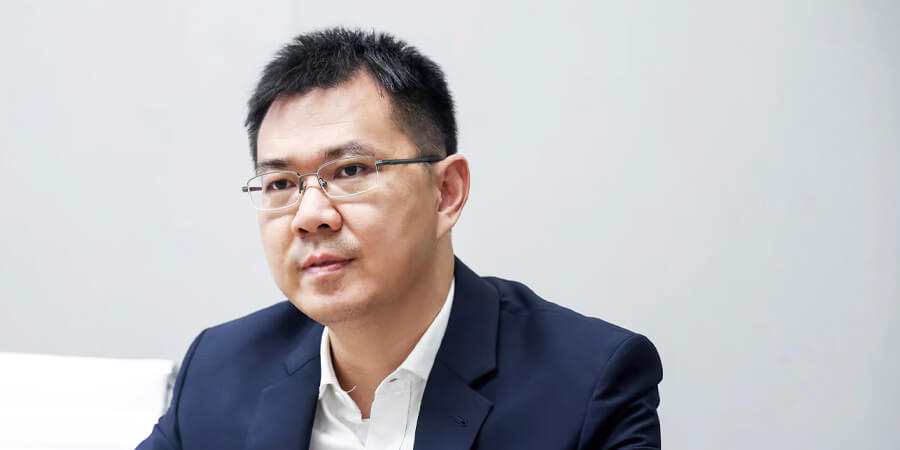The rapid adoption of 5G technology is pushing operators to improve network capabilities in multiple dimensions. To make the most of 5G spectrum and deliver the ultimate user experience, access to new frequency bands is a prerequisite for mobile carriers. As such, the combination of Extremely Large Antenna Arrays (ELAA) and Large-bandwidth mid-band, such as 2.3 GHz and 2.6 GHz, is increasingly seen as the optimal solution for coverage experience with minimal energy consumption.
In an exclusive interview with Telecom Review, Cullen Xu, Vice President of Huawei 5G & LTE TDD Product Line, shared his insights on deploying Huawei’s MetaAAU series products for network optimization in the 5G era during the MWC Shanghai 2023 on June 29.
Network operators often struggle during the phases of 5G network construction and the initial stage of commercialization. To explain this scenario, Xu broke down the process into three broad categories. Firstly, in the overall strategy, he said that in the early stages of network construction, operators pay more attention to branding and first-mover advantages. Currently, more attention is paid to the positive business cycle, the traffic load ratio and the user experience across the entire network. Secondly, turning his focus on network performance, Xu said that at the initial stage, operators focus more on the construction of hotspots or high-density areas. “Currently, many operators have preliminarily completed network deployment in key scenarios. In the future, they need to focus on scenario-based coverage, such as low-density urban areas, suburban areas and indoor areas. In addition, more energy-saving technologies are required, so product solutions that balance performance and energy efficiency are required.” Thirdly, in the service development area, he said that in the future, to-C, to-B and to-H services need to be developed synergistically. He cited the example of fixed wireless access (FWA). He noted that, being different from 4G, FWA has become a basic service in many markets in the 5G era. “In the future, FWA needs to take into account the performance of eMBB users, which poses higher requirements on network capabilities. In terms of terminal prices, there is still a huge demand for low-cost CPEs,” Xu added.
As a solution to the above variances, he explained that networks need to improve 5G inter-generational experience and coverage at the same time. He said that based on the ELAA technology, Huawei has developed the MetaAAU series of products, which are the optimal solution for both coverage and experience. To address the FWA development issues, he said that the development of RedCap technology that supports high-speed IoT connections and the introduction of RedCap CPEs will accelerate user development and promote business success.
Spectrum refarming is a useful technique for managing radio resources, allowing different generations of cellular networks to operate in the same radio spectrum. In other words, it is the process of transitioning a specific radio frequency band from one technology to another. As such, frequency bands such as 2.3 GHz are termed the “golden mid-bands.” To derive value from such bands, Xu explained the process with the example of the 2.6 GHz band. He said that in the LTE era, 2.6 GHz is distributed as B7 and B38 with small bandwidth in some markets. In the 5G era, operators can restructure 2.6 GHz to B41 or use existing B41/N41 large-bandwidth spectrums. He advised building a foundation for 5G intergenerational experiences to maximize the advantages of 5G M-MIMO. In addition, Xu said that more than one million 2.6 GHz 5G base stations have been deployed in China, and hundreds of millions of devices have used this frequency band to improve the maturity of the 2.6 GHz terminal ecosystem.
In the 5G technology for 4G scenario, Xu cited 2.3 GHz as an example and said that it can be used in LTE, LNR, or NR modes based on operators' conditions. He noted that, similar to C-band, 2.3 GHz has the advantage of large bandwidth and can be used for 5G M-MIMO deployment. “The 2.3 GHz M-MIMO technology can also be used for 4G, bringing better user experience and network value to 4G. In addition, mid bands such as 2.3 GHz and 2.6 GHz can better balance coverage and capacity,” Xu detailed.
When it comes to network coverage optimization, ELAA enables high-band networks to provide the same coverage as C-band, allowing operators to provide 10 Gbps to all users at all times, irrespective of their geographical location. Huawei’s ELAA MetaAAUs have been put into commercial use in more than 60 cities. Turning his focus to the progress and direction of ELAA, Xu noted that ELAA is an important innovation direction for 5G products. It can maximize spectral efficiency, improve network coverage and save energy. He explained that ELAA is the optimal solution for coverage, experience and energy efficiency, helping operators greatly reduce network construction costs and improve network performance.
Xu further explained that the ELAA technology has been widely recognized by the industry as the evolution of M-MIMO’s overall direction.
Huawei's ELAA product has won multiple industry awards, including GLOMO. It has been put into large-scale commercial use worldwide, with more than 100,000 pieces shipped. In the future, ELAA can be applied to higher frequency bands, such as mmWave, and use more than 1000 antenna elements to achieve ultimate performance. In addition, the ELAA-based MetaAAU will evolve to cover all frequency bands and scenarios. It aims to make continuous breakthroughs in ultimate energy efficiency, simplified deployment and excellent performance, helping operators build 5G networks with the highest performance, highest energy efficiency, simplest deployment and strongest evolution capabilities.
Also read: GSMA 5G Futures Community: 19 Operators Come Together to Accelerate 5G-Advanced Adoption










